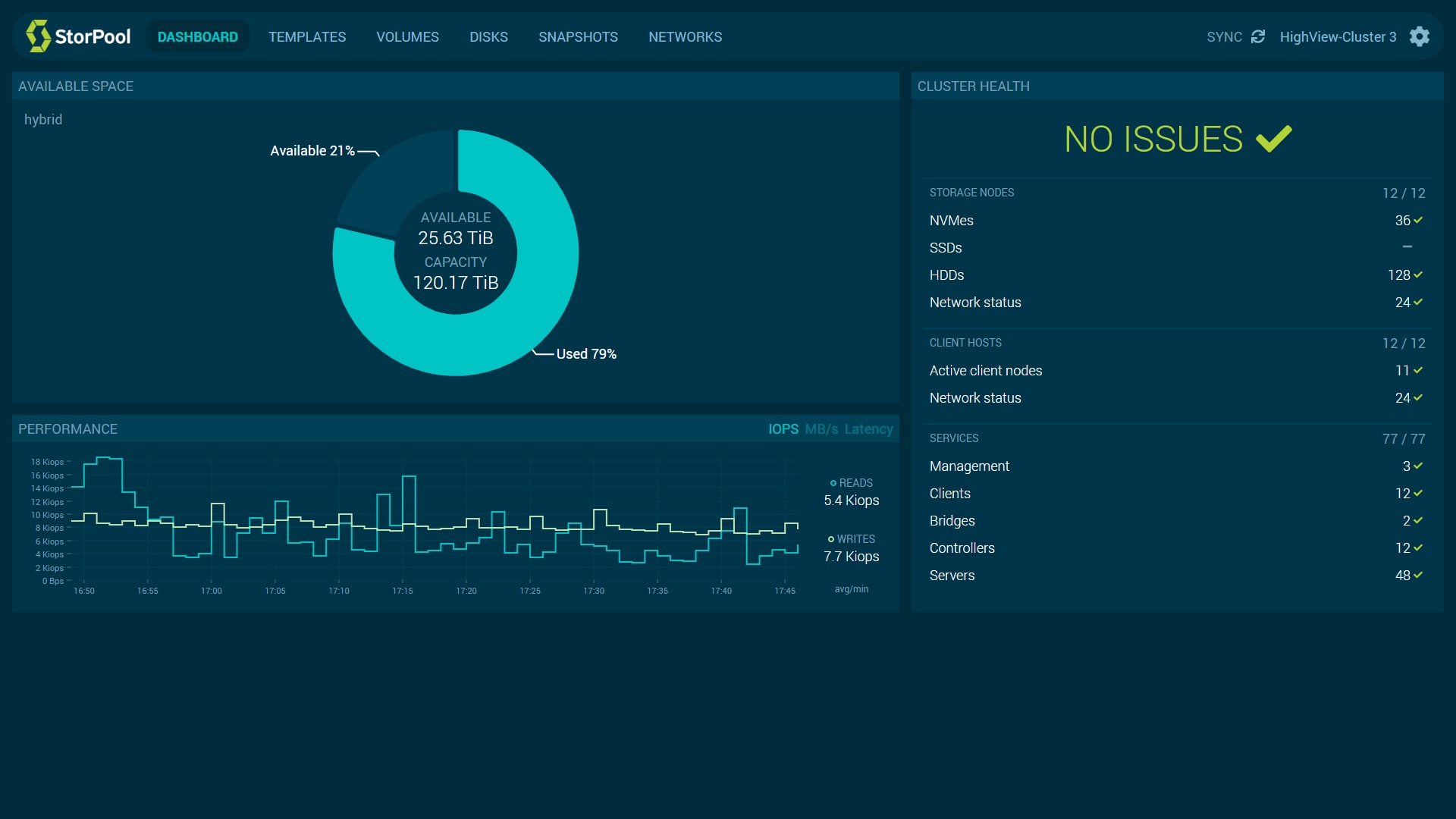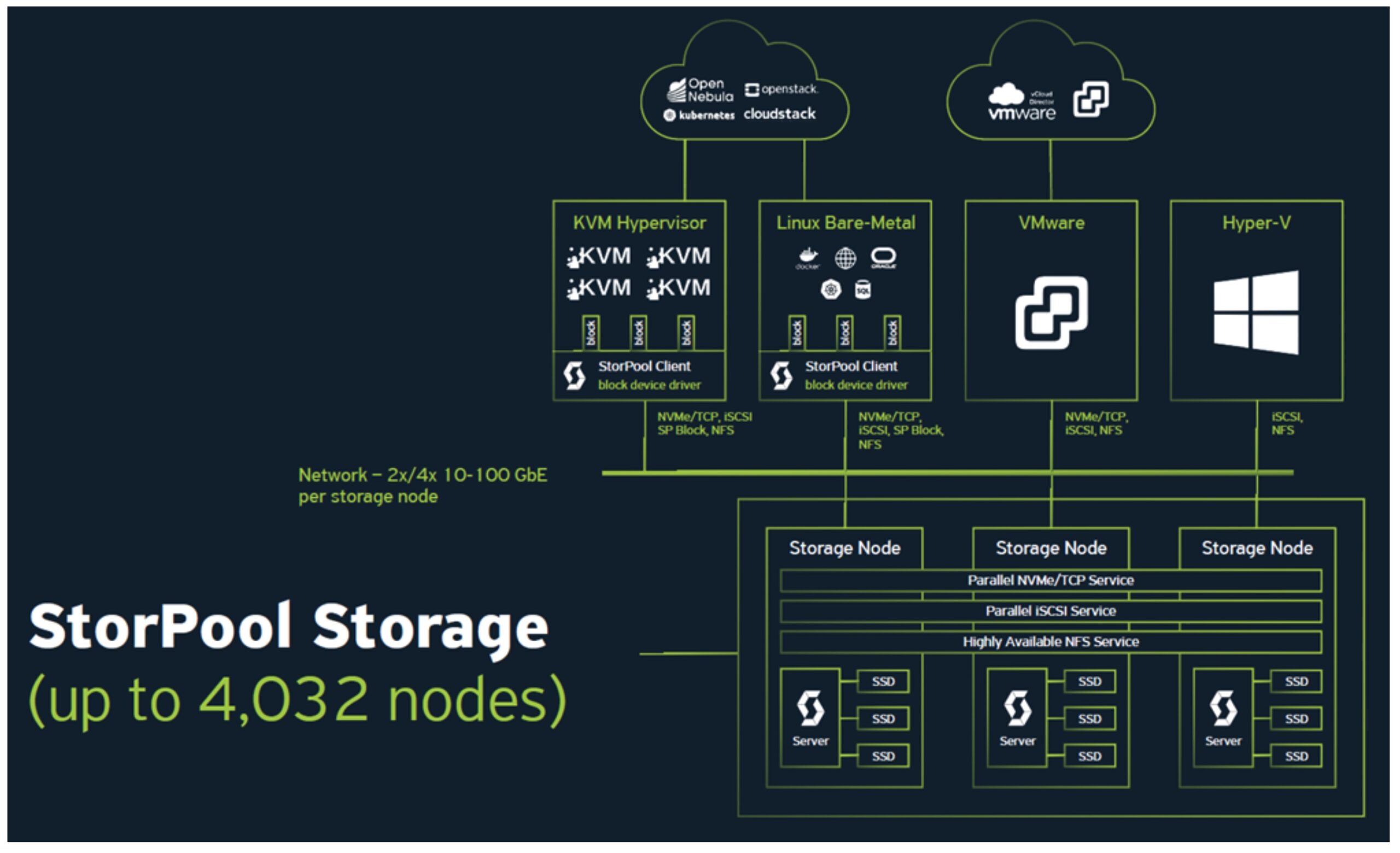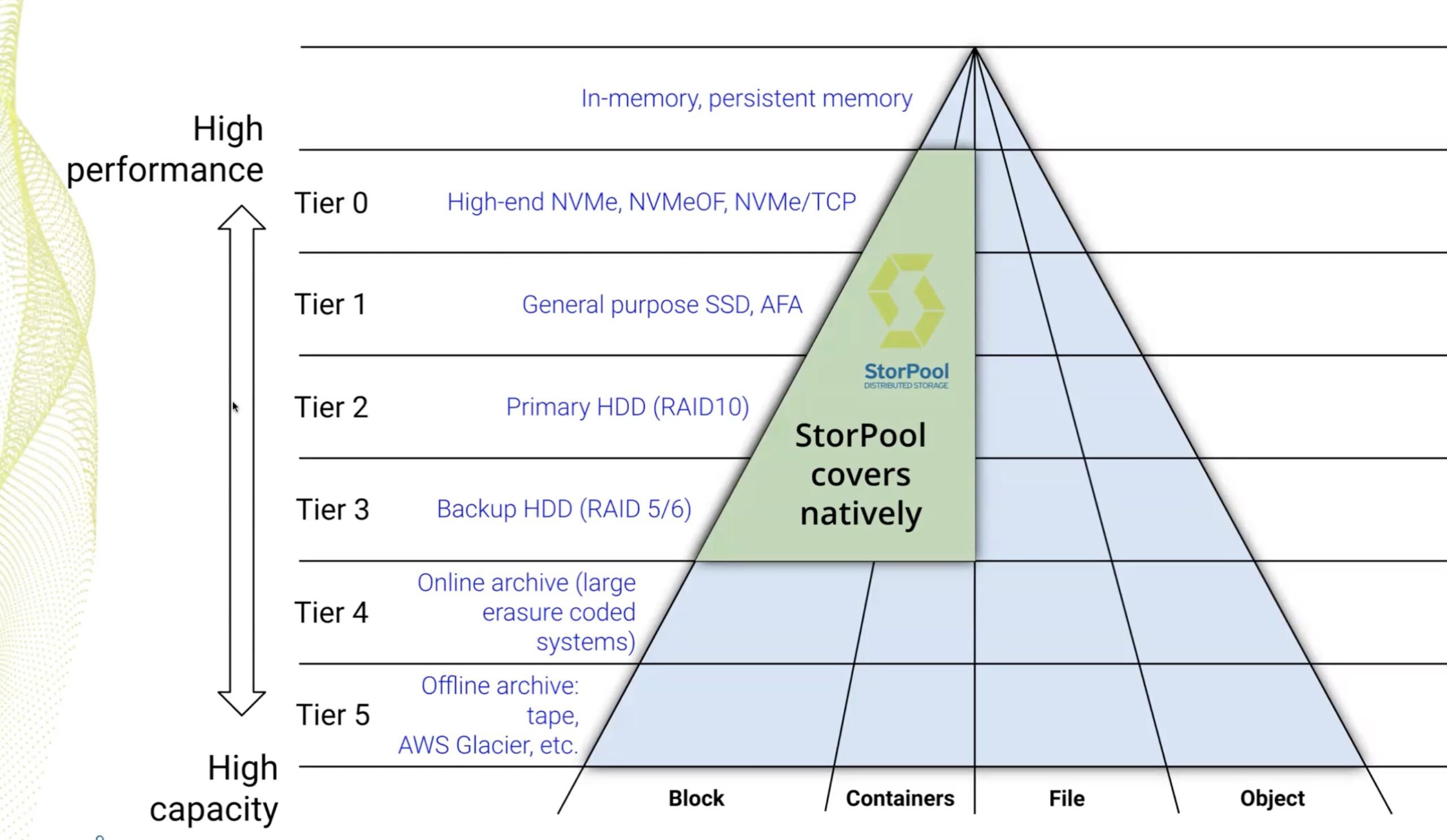When it comes to datacenter storage, the cost ceiling has always been lofty. Traditional storage vendors charge a premium for their solutions because there is no competing solution that works on commodity hardware that could dramatically lower the cost. StorPool has flipped the script by making the wish for a viable commodity hardware solution come true.
The StorPool Platform
StorPool is a software SAN solution which requires just a few commodity servers with SSD or NVMe storage devices, and 10 Gig or faster standard Ethernet NiCs in them. These are off-the-shelf servers, available to be bought at just any vendor out there. Once the servers are brought in, and a Linux operating system is installed, the StorPool storage solution can be set up right away.
StorPool supports all the required functions one would expect from a SAN solution. This includes redundancy, high uptimes, LUNs, snapshots, and more. Topping that, StorPool takes several of these capabilities to the next level by eliminating the requirement for a large infrastructure for improved performance, or reduced redundancy during existing hardware upgrades.
When upgrades are needed – for capacity or performance – nodes can be flexibly added, provisioned and merged into the existing solution, without any downtime. This enables always-on operations of the business, which is just not possible with the traditional storage appliances model
As new servers are provisioned into the existing StorPool environment, the storage will scale, allowing the entire ecosystem to take advantage of the additional capacity. All of this is done without causing any downtime within the environment either.
Unlike with many traditional storage solutions that have racks shipped with the hardware for housing disks and head units, StorPool’s servers are compatible with most garden-variety racks. The servers being commodity servers make it simple, cheap and easy to deploy this next-generation data storage platform.
StorPool has taken this flexibility a notch higher by including rack-level data distribution. The solution knows which rack houses the data, and can ensure that redundant copies are stored within different racks and has the ability to scale across racks
As shown in Figure 1, the consumers of the storage within the environment can be the application and workload types which you’d normally expect in any datacenter, such as, KVM, Linux bare-metal machines, VMware, and Microsoft Windows Hyper-V (and there for Windows servers) and any application, database or other workload running in these environments. This breadth of support gives StorPool the ability to work with a vast majority of servers in datacenters today.

Figure 1: Network Design of a StorPool Solution
Elastic Scaling
When it comes to scalability, the StorPool solution stands out from the rest. The minimum configuration of the StorPool environment is a small 3 node setup (it uses triple redundancy), while the maximum size is 4,032 nodes. This wide range allows the environment to grow with the customers’ needs. As the performance increases with the number of servers in the environment, the datacenter footprint grows as well. This is remarkable and a feat not available with other solutions. A customer can deploy a starting system with as low as 20TB and scale that to tens of petabytes of data in a single storage system.
One of the real perks of commodity hardware is that users can take advantage of any standard hardware. There is absolutely no need for the hardware that is added today to match those which were installed years ago. So no need to source older servers to continue updating the environment. And there is no need for any specialized devices too – like NVDIMMs or DPUs.
When the StorPool cluster needs to be expanded, users can simply purchase the current generation of servers available in the market and add those to the environment. So users can benefit from the latest innovations in hardware, in the most cost efficient manner.
As older servers are phased out, the same approach can be adopted to replace them with modern servers. The StorPool environment will automatically absorb the replacement node and seed it with the data which should be on it, allowing it to be used to service storage requests in short order. This process is remarkably seamless – no downtime is incurred, no user operations stopped.
Performance
Speed is one of the most impressive things about the StorPool block storage data platform. It is faster than all comparable high-end all-flash arrays and can achieve performance metrics, which are above and beyond what people deem possible. The storage system can process operations with consistent 100 ms latency and reach more than 100 million IOPS and 1 TB/s of throughput, which is truly remarkable.
Conclusion
StorPool has brought to the IT enterprise storage space what users have been wanting for over a decade now – quality, high-speed, highly scalable storage on commodity hardware. With the networking technology having reached the speeds that we need-, and the SSD/NVMe perf at where we need- it, the StorPool software is the last missing link required to manage the environment efficiently and present the storage to the servers using all standard hardware technology.
Be sure to check out StorPool’s demo of the solution from the recent Storage Field Day event.




